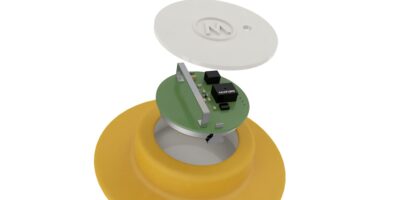Tyre sensor combines monitoring for smart tyres
Tyre status and loading monitoring is possible, together with pressure sensing in the MLX91805 smart tyre sensor from Melexis. OEMs can use the sensor to prepare for the extension of mandatory tyre pressure monitoring to include commercial vehicles and to enable future generations of smart tyres, says the Belgium-based engineering company.
Unlike conventional, rim-mounted tyre pressure monitoring sensors (TPMS), the MLX91805 has been specially designed to be embedded in the tyre. It integrates an 800g XZ-axis accelerometer that senses up to 10,000 samples per second. It also integrates a pressure sensor, together with temperature and voltage sensors.
The MLX91805 is suitable for tyres used on commercial vehicles, including heavy duty ones, as well as for passenger cars. EU regulations on tyre pressure monitoring for heavy duty commercial vehicles is due to come into force some time between 2022 to 2024. The multiple sensors in the MLX91805 will help ensure compliance and provide extra information, such as loading, that can extend tyre life and boost fuel economy and safety, says Melexis.
The sensor integrates a low power, 16-bit microcontroller and a 315/433MHz RF transmitter that draws just 5mA at 5dBm output power and with just 90nA sleep current. It can run from a tiny battery for the life of the tyre, says Melexis. In addition to built-in diagnostics and fault detection, a maths co-processor allows fast and energy-efficient digital signal processing.
Melexis also offers a library to help application-level software capture and interpret the key information, like accelerometer signals, of the tyre footprint area, to enhance design development.
The MLX91805 is available in a 5.0 x 4.0mm DFN14 package.
Ivan Zagan, product manager for tyre monitoring sensors at Melexis, observed: “This world-first device lets tyre manufacturers create the next generation of smart tyres to deliver extra value for owners and operators, enable new services to maximise fuel efficiency and safety, and contribute to the development of self-driving vehicles.”




